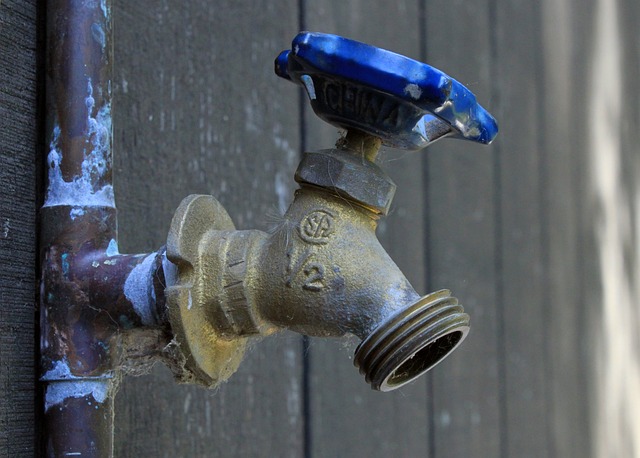Leaky faucets are more than just an annoyance – they can lead to significant water wastage and inflated utility bills. In this post, we’ll delve into the signs that indicate a dripping faucet, explore the common causes behind this issue, and provide practical solutions for fixing it.
A dripping faucet isn’t just about the sound; it’s a signal of potential underlying problems that demand attention. By understanding what these warning signs mean and tackling them head-on, you can save water and money while preventing further damage to your plumbing system. Let’s roll up our sleeves and get ready to tackle those pesky drips once and for all.
Table of Contents
ToggleRecognizing the Signs of a Dripping Faucet
Water Pooling
One of the most noticeable signs is water pooling around the base of the faucet. This occurs when water continuously drips from the spout and accumulates on the surface below. If you notice this, it’s highly likely that your faucet is dripping.
Another common sign to look out for is audible dripping or hissing sounds coming from your faucet. Even if you can’t see any visible leaks, these sounds are a clear indicator that there might be a drip within your plumbing system.
Increased Water Bills
Have you noticed an increase in your water bills without any change in usage? This could be due to a leaking tap in your home. Even small drips can add up over time, resulting in significant wastage and higher bills. It’s important to address this issue promptly to avoid unnecessary expenses.
Keep an eye out for other signs such as low water pressure or irregular flow from the faucet. These could indicate underlying issues with washers, fixtures, or corrosion caused by hard water.
Common Causes of Faucet Leaks
Worn-out Washers or O-rings
Leaky faucets often result from worn-out washers or O-rings. These small components create a seal that prevents water from leaking out when the faucet is turned off. Over time, they can degrade, causing water to seep through and result in a faucet leak. This issue is commonly identified by a slow drip from the faucet spout, even when it’s fully closed.
When these parts wear down, they may need to be replaced to stop the leak. It’s essential to ensure that the replacements are compatible with your specific faucet model. Regular maintenance and timely replacement of washers and O-rings can prevent this common cause of leaky faucets.
Corroded Valve Seat Causing Leaks
Another potential culprit behind faucet leaks is a corroded valve seat. The valve seat connects the faucet and the spout, playing an integral role in regulating water flow. When this component becomes corroded due to mineral deposits or sediment buildup, it can lead to water seepage around the spout base.
To address this issue, cleaning or replacing the valve seat may be necessary. Regular cleaning as part of routine maintenance helps prevent corrosion and prolongs the lifespan of this critical component within your faucet, reducing chances of future leaks.
High Water Pressure Leading to Faucet Leaks
Excessively high water pressure can also contribute to leaky faucets by putting strain on various components within the fixture, leading them to wear out more quickly than usual. This increased pressure causes stress on washers, valves, and other internal parts which eventually results in drips or continuous leaking from your faucet.
Installing a pressure regulator at your main water line can help mitigate this issue by maintaining optimal pressure levels throughout your plumbing system without exerting unnecessary strain on individual fixtures like faucets.
Identifying Faulty Faucet Components
Inspecting Washers and Seals
One of the first things to check is the condition of the washers and seals. Over time, these components can wear out, leading to leaks. Look for signs of wear or tear on the washers and seals. If they appear flattened, torn, or damaged in any way, they likely need to be replaced. This simple maintenance task can often resolve faucet leaks.
Mineral deposits and corrosion are also common culprits behind faulty washers and seals. When mineral build-up occurs, it can prevent a proper seal from forming when the faucet is turned off. Similarly, corrosion can cause damage that compromises the effectiveness of these components. By regularly inspecting these issues, you can address them promptly before they lead to leaking faucets.
Testing Faucet Handle and Spout
In addition to examining internal components like washers and seals, it’s essential to test external parts such as the faucet handle and spout for looseness. A loose handle or spout not only indicates immediate problems but may also contribute to future issues with leaking.
Check if there’s any play in the faucet handle when turning it on or off; this could signal a problem with its mechanism inside. Likewise, a wobbly spout might suggest underlying issues that need attention before they escalate into more significant concerns regarding water waste due to constant dripping.
Regularly assessing all these aspects ensures early detection of potential problems within your plumbing fixtures while helping you avoid costly repairs down the line.
Types of Faucets and Their Leak Patterns
Compression Faucets
Compression faucets are prone to leaks from the spout when the internal components wear out. The most common sign of a worn-out compression faucet is water dripping steadily from the spout even after it’s turned off. This type of leak can occur due to a deteriorated rubber washer within the faucet assembly. When this happens, it creates space for water to seep through, causing an incessant drip.
When dealing with a leaking compression faucet, replacing the worn-out washer is often the solution. By doing so, you can effectively stop the dripping and prevent water wastage.
Ball-Type Faucets
Ball-type faucets typically develop leaks at either their base or handle when damaged. If you notice water pooling around these areas or see visible signs of corrosion, there’s a high chance that your ball-type faucet is leaking. The constant presence of moisture near these parts signifies that there might be damage to crucial components within the faucet.
To address leaks in ball-type faucets, inspecting and replacing damaged O-rings and seals could resolve the issue. Ensuring proper installation and maintenance can help prevent future leakage problems.
Cartridge Faucets
Leakages in cartridge faucets commonly occur from their handles when O-rings become worn out over time. A clear indication of this problem is water dripping specifically from under or around the handle area whenever it’s used or turned off.
If you encounter such leaks with your cartridge faucet, replacing its worn-out O-rings should rectify this issue effectively. Properly maintaining these small yet vital components will help ensure that they remain intact and functional for longer periods without causing any leakage concerns.
Step-by-Step Guide to Fixing Leaky Faucets
Shutting off Water Supply
Before you begin fixing a dripping faucet, it’s crucial to shut off the water supply. Locate the shutoff valve under the sink and turn it clockwise until it stops. This step prevents any accidental water leakage while you work on the faucet.
When dealing with a plumbing problem like a dripping faucet, remember that safety comes first. Turning off the water supply ensures that you can work on your repairs without causing further damage or creating a mess in your home.
Replacing Damaged Components
Once you’ve turned off the water supply, start disassembling the faucet by removing handles and other components carefully. Look for damaged parts such as worn-out washers, gaskets, or O-rings. These are often culprits behind leaky faucets and need to be replaced.
Inspect all components thoroughly for signs of wear and tear, corrosion, or mineral buildup. It’s essential to replace any damaged parts with new ones to ensure an effective repair that will stop the annoying drip from persisting.
Reassembling and Checking for Leaks
After replacing any faulty components, reassemble the faucet in reverse order of disassembly. Make sure all screws are securely tightened but not over-tightened to avoid damaging delicate parts of your plumbing system.
Once everything is back in place, turn on the water supply slowly and check for leaks at every connection point. If there are no more drips or leaks, congratulations! You have successfully fixed your dripping faucet!
Preventing Faucet Leaks with Essential Maintenance Tips
Regularly Cleaning Aerators
Aerators are essential components of plumbing systems that control the flow and mix air with water to produce a steady stream. Over time, mineral deposits and debris can accumulate in the aerator, leading to clogs that can cause dripping faucets. To prevent this, it’s crucial to regularly clean the aerator by unscrewing it from the faucet spout and soaking it in vinegar or using a small brush to remove any buildup. By keeping the aerator clean, you ensure a smooth flow of water without any obstructions.
Another way to maintain your faucet is by using thread seal tape when installing new components such as showerheads or replacing worn-out parts like O-rings. This tape provides a watertight seal between threaded connections, preventing leaks from occurring at these joints. When applying thread seal tape, make sure to wrap it around the threads in the direction of their rotation for a secure fit.
Periodically Checking for Leaks
One of the most effective ways to prevent major issues with your plumbing system is by periodically checking for and repairing small leaks promptly. Even minor drips from faucets can lead to significant water wastage over time if left unattended. Inspect all visible pipes and fittings for any signs of moisture or dripping water regularly. If you notice even a slight leak, take immediate action by tightening loose nuts or replacing damaged washers within your faucet assembly.
When to Seek Professional Help for Faucet Repairs
Persistent Leaks
If you’ve attempted DIY repairs on your dripping faucet, but the leaks persist, it might be time to call in professional plumbing services. Despite your best efforts, some leaks can be stubborn and require the expertise of a professional plumber. Even after following maintenance tips from the previous section, certain underlying issues could still lead to persistent leaks.
For example, if you’ve tightened all visible screws and connections on the faucet yet it continues to drip, this may indicate a more complex problem within the internal components that only a professional can diagnose and fix.
Lack of Experience
Another sign that it’s time to seek professional help for faucet repairs is when you lack experience in handling complex faucet types. While basic maintenance tasks like replacing washers or O-rings are manageable for many homeowners, some faucets have intricate designs or mechanisms that require specialized knowledge and skills to repair effectively.
For instance, newer models with touchless technology or high-end designer faucets often contain advanced features that demand specific expertise for troubleshooting and fixing any issues they encounter. In such cases, engaging experienced professionals who specialize in sink repairs ensures that these sophisticated systems are handled correctly without causing further damage.
Need for Specialized Tools or Replacement Parts
Sometimes DIY enthusiasts face challenges because they lack access to specialized tools or replacement parts necessary for comprehensive faucet repairs. Certain problems may require specific equipment such as basin wrenches or cartridge pullers which aren’t typically found in every homeowner’s toolbox.
Similarly, identifying the correct replacement parts for your particular faucet model can be tricky without expert guidance. A professional plumber not only possesses an array of specialized tools but also has access to a wide range of replacement parts needed for various types of faucets on the market today.
The Risks of Ignoring Dripping Faucets
Potential Water Damage
Dripping faucets can lead to significant water bills. A single dripping faucet can waste hundreds of gallons of water over time, causing a noticeable increase in your monthly bill. The constant moisture from the drip also poses a risk of damaging surrounding fixtures and surfaces. This steady flow of water can cause discoloration, corrosion, and even structural damage to sinks, countertops, and cabinets.
Ignoring dripping faucets may result in an increased risk of mold and mildew growth due to the excess moisture. These fungi thrive in damp environments and are often found near leaking plumbing fixtures. Mold not only causes unpleasant odors but also poses health risks such as respiratory issues or allergic reactions for individuals sensitive to mold spores.
The continuous drip from a faucet is more than just an annoyance; it signifies potential problems that should be addressed promptly.
Wastage of Significant Amounts of Water
A constantly dripping faucet wastes a surprising amount of water over time. For instance, if a faucet drips at a rate of one drip per second, it could waste more than 3,000 gallons per year – equivalent to the amount needed for over 180 showers! This wastage not only impacts your utility bills but also contributes to environmental concerns related to freshwater conservation.
Addressing dripping faucets promptly not only saves you money on your water bill but also helps conserve this precious resource for future generations.
Increased Risk of Mold Growth
The excess moisture caused by dripping faucets creates an ideal environment for mold growth. Bathrooms are particularly susceptible due to their high humidity levels combined with the persistent presence of moisture from leaky faucets or pipes.
Mold thrives in these conditions and can quickly spread across walls, ceilings, grout lines between tiles, shower curtains, and other areas where there’s excessive moisture present due to leaking plumbing fixtures.
Conclusion
Now that you’ve learned to recognize the signs, causes, and solutions for dripping faucets, it’s time to take action. Don’t let those pesky leaks go unnoticed any longer. By promptly addressing faucet issues and implementing preventive maintenance, you can save yourself from the headache of costly repairs and conserve water in the process. Remember, a small drip may seem insignificant, but over time, it can lead to significant water wastage and inflated utility bills. So, grab your tools and tackle those leaks head-on!
Don’t wait until it’s too late—start fixing those dripping faucets today and be proactive in maintaining your plumbing fixtures. Your wallet and the environment will thank you for it.
Experience the Ultimate Solution for Dripping Faucets with Garcia Home Restoration!
At Garcia Home Restoration, we recognize the annoyance and potential water waste caused by dripping faucets in your home. Our team, known for their proficiency in faucet repair, is committed to fixing those pesky leaks and restoring efficiency to your plumbing.
Our mission at Garcia Home Restoration goes beyond mere fixes; we strive to enhance the overall functionality and conservation in your home. We’ve built a remarkable reputation in Contra Costa County for our dedication to quality, our extensive plumbing knowledge, and the trust we’ve established with numerous happy clients. Don’t let a dripping faucet disrupt your daily routine or inflate your water bills. Contact us today for top-tier faucet repair services and enjoy the satisfaction of a flawlessly functioning plumbing system!




